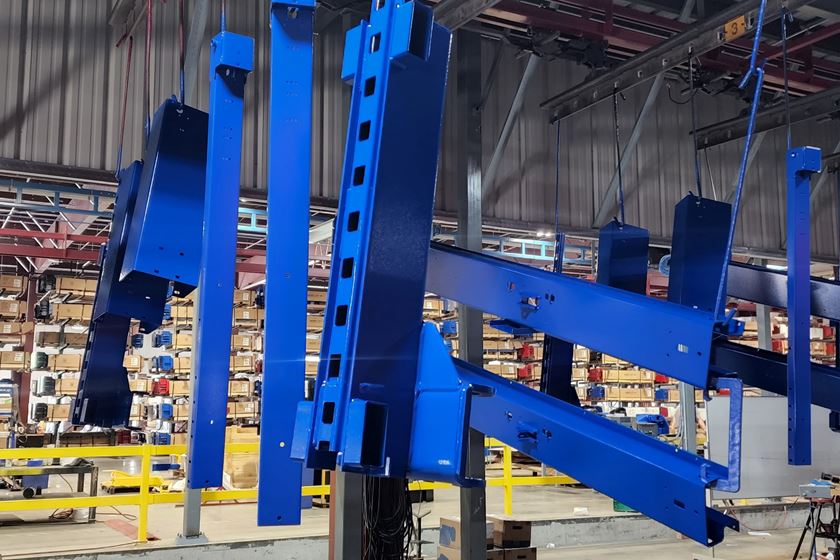Film Thickness Control
Have a powder coating job that requires precise film thickness control? Products Finishing columnist Rodger Talbert offers advice controlling the variables that can impact your success.
#ask the expert #racking

Q: We have a new job that requires precise film thickness control within a 1.0 mil tolerance (plus or minus 0.5 mils). The part goes through some post-forming and if the film is too thick, it cracks. Appearance and corrosion resistance require a minimum film build. We have worked hard at it but so far we have not been able to maintain the tight tolerance on every batch. Can you give us any guidance on how to keep the film thickness that close all the time?
A: I have addressed this issue many times over the years, both in the field and in this column. I will give you variables that must be controlled but let me start out by saying that control is the end game. There is no substitute for running trials to determine the range of variables that work and establishing the methods to hold them within tolerance.
Featured Content
As to the variables, it starts with proper tooling. I often use the word tooling to try to communicate the precision required for accurate and repeatable film control. Racking is a good word as long as the right practices in design and maintenance are applied.
Start with density. Parts should be grouped as close as possible as long as they do not touch and the space between parts is not so close that it interferes with coverage. If the parts have a lot of surface area facing the spray guns and very little depth, they can be very close together. The more the depth increases, the more they must be spaced to allow powder to thoroughly coat the sides.
The second feature to consider is the contact. Simple hooks can be effective but if film build has to be precise or the part is light and moves around a lot, it may require a tight hold on the part to ensure that it cannot move during the coating process. It may need a better contact such as a spring-tempered stainless-steel clip or a peg that inserts tightly to hold it firmly in a consistent position.
Rack maintenance is also critical. Rack contacts that break or bend must be replaced. Racks need to be cleaned on a scheduled basis to maintain good ground. And if you must maintain precise film thickness, then grounding is essential. Film thickness variation is will always be wider if the earth ground is not maintained.
So now that the rack is precise and well maintained we turn attention to application. Let’s assume that you have a good booth with uniform airflow. If you have a side draft booth with a collector on one side only, it will be hard to maintain uniform film thickness on both sides of a part. Down draft is superior but drawing from both sides can work also.
Application variables include power output, pattern, gun-to-target distance, velocity and electrostatic settings. If you use gun movers you will need to work on stroke speed, distance and lead/lag point where the guns turn on and off. Trials can be used to measure these variables and determine what is the best possible set up to achieve the film that you are trying to maintain. Once you have optimized all of your settings you will need to measure the results and learn how accurate they are and see if there are any other time variables such as rack build-up or powder volume or level or anything that changes over time. You cannot gather too much data. Measurement is essential. Use it for confirmation and adjustment over time.
Determine the right rack design and application settings, keep measuring and practice scheduled maintenance to achieve precise film thickness control.
About the Author

Rodger Talbert
Rodger Talbert has more than 30 years experience in the powder coating industry.
RELATED CONTENT
-
How to Apply the 720 Rule to Current Density Anodizing
What can you tell me about the 720 Rule as it applies to current density anodizing? Plating expert Sjon Westre, Ph.D., from Chemeon, answers this question.
-
Control of Powder Film Thickness
Powder coating consultant Rodger Talbert offers insights for film build control when powder coating.
-
The Importance of Rack Maintenance
A look at how poor rack maintenance contributes to wasted time, wasted chemicals and wasted materials.


















